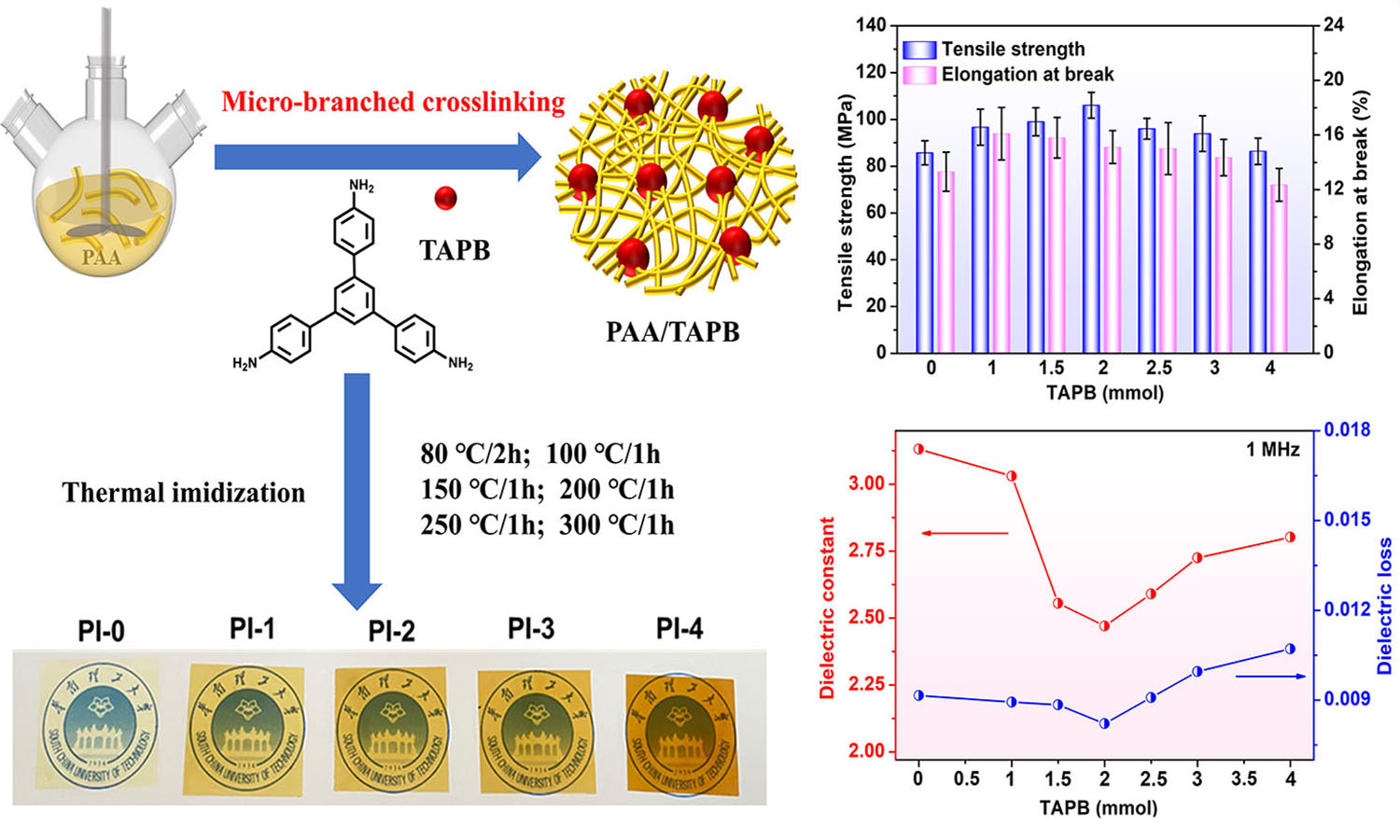Construction of micro-branched crosslink fluorinated polyimide with ultra-low dielectric permittivity and enhanced mechanical properties
Wanjing Zhao, Xianwu Cao, Jinshu Huang, Jiangwei Wen, Yun He, Junwei Zha, Robert Kwok Yiu Li, Wei Wu

Vol. 16., No.2., Pages 142-151, 2022
DOI: 10.3144/expresspolymlett.2022.12
DOI: 10.3144/expresspolymlett.2022.12
GRAPHICAL ABSTRACT

ABSTRACT
There is a great demand for low dielectric materials as insulating interlayers in large-scale integrated circuit development. However, it is still a huge challenge to reduce the dielectric permittivity of polymers while maintaining excellent thermal stability and mechanical properties. In this work, the fluorinated polyimides (PIs) in combination with a micro-branched crosslinking structure were prepared successfully by introducing different amounts of 1,3,5-tris(4-aminophenyl) benzene (TAPB) to obtain ultra-low dielectric permittivity. The results revealed that PI film containing 2 mmol TAPB had the lowest dielectric permittivity (2.47) and dielectric loss (0.008) at 1 MHz due to the fluorine atoms and the micro-branched crosslink structure, which not only decreased the molecular polarizability but also increased the free fractional volume. In addition, PI film containing 2 mmol TAPB had the highest tensile strength of 106.02 MPa with an elongation at a break of 15.1% because the presence of TAPB effectively promoted the connection between PI molecular chains, resulting in the inhibition of the molecular mobility. The incorporation of TAPB also enhanced the thermal stability and ultraviolet light-shielding performance of PI films. This method paves the way for the development of PIs with ultra-low dielectric permittivity for the electronic industry.



